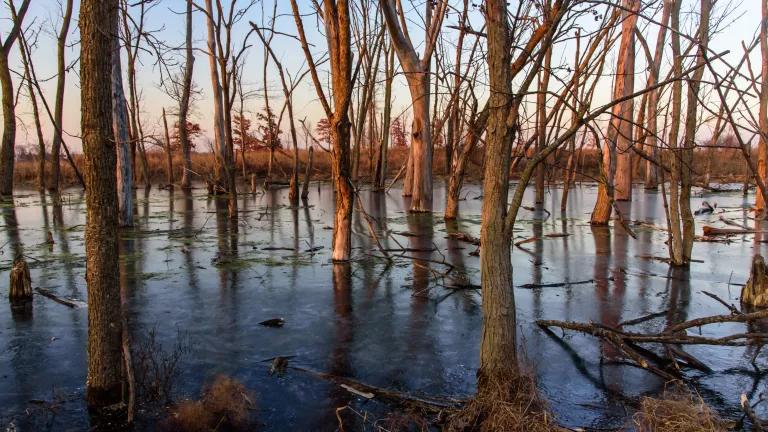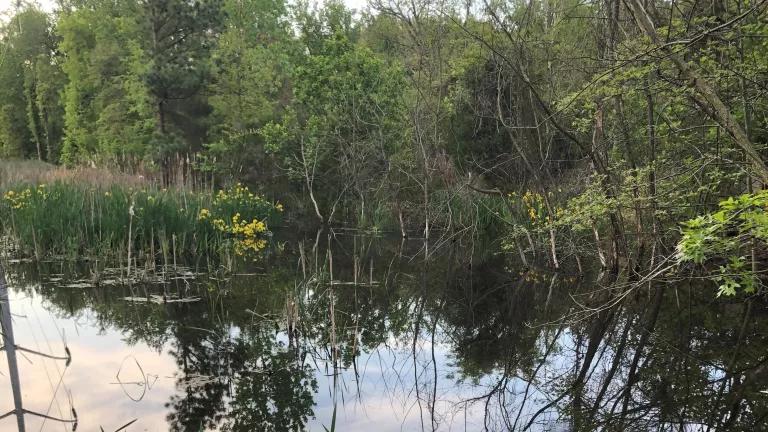Recycle More Water: New Year’s Resolution for Latin America

This post authored by Andrea Becerra.
As one of the most vulnerable regions to climate change, Latin America has a long list of resolutions to build resilience for 2019. High on this list should be accelerating the adoption of wastewater recycling solutions. Latin America has abundant sources of freshwater, yet much of the region struggles with crippling water shortages. In 2015, central Chile clambered out of a five-year drought. The following year, Bolivia suffered the worst water scarcity in 25 years. And in 2018, a dry spell in Central America caused significant crop losses that threatened the food security of 2.8 million people. As growing populations demand more water, freshwater supplies are expected to dwindle due to climate change. Wastewater recycling presents an important opportunity in an uncertain future.
Recycled water can come from municipal sewer systems, agriculture, and industrial processes. Once treated, wastewater can be cleaner than the water in your tap. Parts of Mexico, Brazil, and Chile are already beginning to experiment with water reuse. A vineyard in Tijuana is using treated water to irrigate their vines, turning water once destined for the Pacific into a Cabernet Sauvignon. A successful wastewater recycling pilot project in Coquimbo, in Chile’s arid north, used treated water for six hectares of alfalfa. According to the researchers in the study, a similar model expanded to other water-intensive crops, like avocados, could save the agriculture industry an annual 1,200 million Chilean pesos (1.75 million USD) in water costs. As the seat of Latin America’s largest wastewater recycling plant, Brazil is well ahead of its neighbors: Aquapolo in São Paulo provides non-potable water for various industries in the region, recycling a supply equivalent to water for 500,000 inhabitants.
While wastewater recycling ventures are beginning to take off, Latin America has plenty of room for growth. In some parts of the region, wastewater isn’t even treated. Places like Chile that treat 90 percent of water are more than ready to employ recycling solutions. Other countries, like Costa Rica (which treats less than 4 percent of its wastewater), will have to leapfrog the infrastructure and technology to both treat and recycle water effluent.

Foto de Ivan Bandura a través de Unsplash
A viable alternative
When compared to desalination, water reuse is considered a far better option. It requires less energy and is more sustainable and cost-effective. A recent study found that 16,000 desalination plants around the world produce more toxic waste than drinking water. Another 24-year study by the Pacific Institute found that desalination is consistently more expensive than recycling water. When water is recycled, more freshwater becomes available for consumption and for the environment, to recharge depleted aquifers or replenish rivers. From energy production to the development of fertilizers during the wastewater treatment process, water recycling also presents many opportunities for profit.

Infographic by World Bank. From article “Wastewater? Shifting Paradigms in Latin America and the Caribbean: from Waste to Resource.”
Water recycling has been around since the 1960s, and despite its benefits much of the globe has been slow to adopt water recycling solutions. The “yuck factor” of reusing water from industry waste or drinking water that once washed down our sinks is hard for society to swallow. While it’s not an easy sell, plenty of regions and utilities around the world are successfully implementing wide scale wastewater recycling solutions, including Israel, Singapore, and parts of California—it's even happening on the International Space Station. Orange County, California, has spent years staging public awareness campaigns to promote the benefits of wastewater recycling. Some highlights include a spoof by the actor Jack Black drinking recycled water from “Porcelain Springs” and today’s ongoing campaign #GetOverIt!, which invites people throughout California to participate in a taste test of the treated water.
As populations grow and climate change depletes water resources, Latin America should move quickly to address dated water management practices and consumer consciousness in water conservation. As regions urbanize and develop, the gap between water demand and water supply is projected to increase, highlighting the importance of solutions like wastewater recycling. While solutions like water reuse will be critical for building resilience in the face of water scarcity, it’s important to note that Latin America also has to deal with the very important task of improving overall sanitation services—40 percent of the population is not connected to a sewage system, and less than 40 percent of wastewater in the region is treated. If Latin America wants to make progress on Sustainable Development Goal 6 to “ensure availability and sustainable management of water and sanitation for all” it will have to do more than expand wastewater recycling. Much of the hard work is in shifting the mindsets of policymakers, utilities, companies, and consumers. The technology and the solutions exist, so the real issue is how to motivate key players to adopt new strategies and invest in new ideas.
Andrea Becerra recently graduated from The Fletcher School at Tufts University with a Masters in International Environment and Resource Policy and Integrated Water Management. She is a consultant for NRDC focusing on urban and rural water management issues in Latin America.



